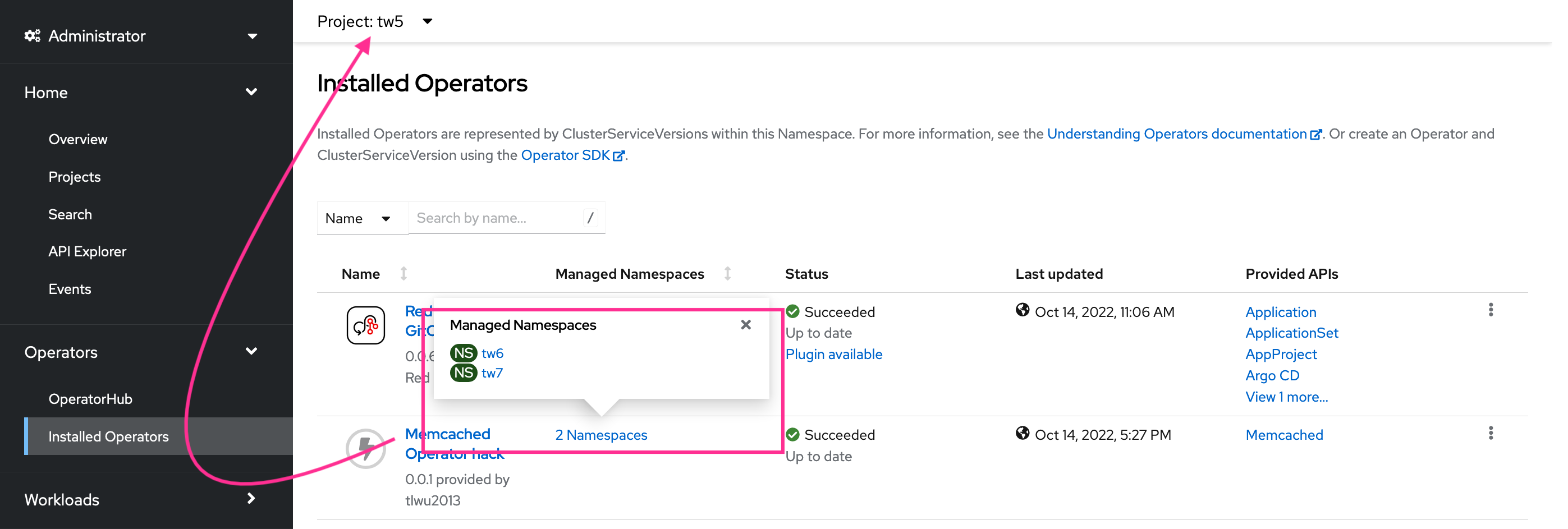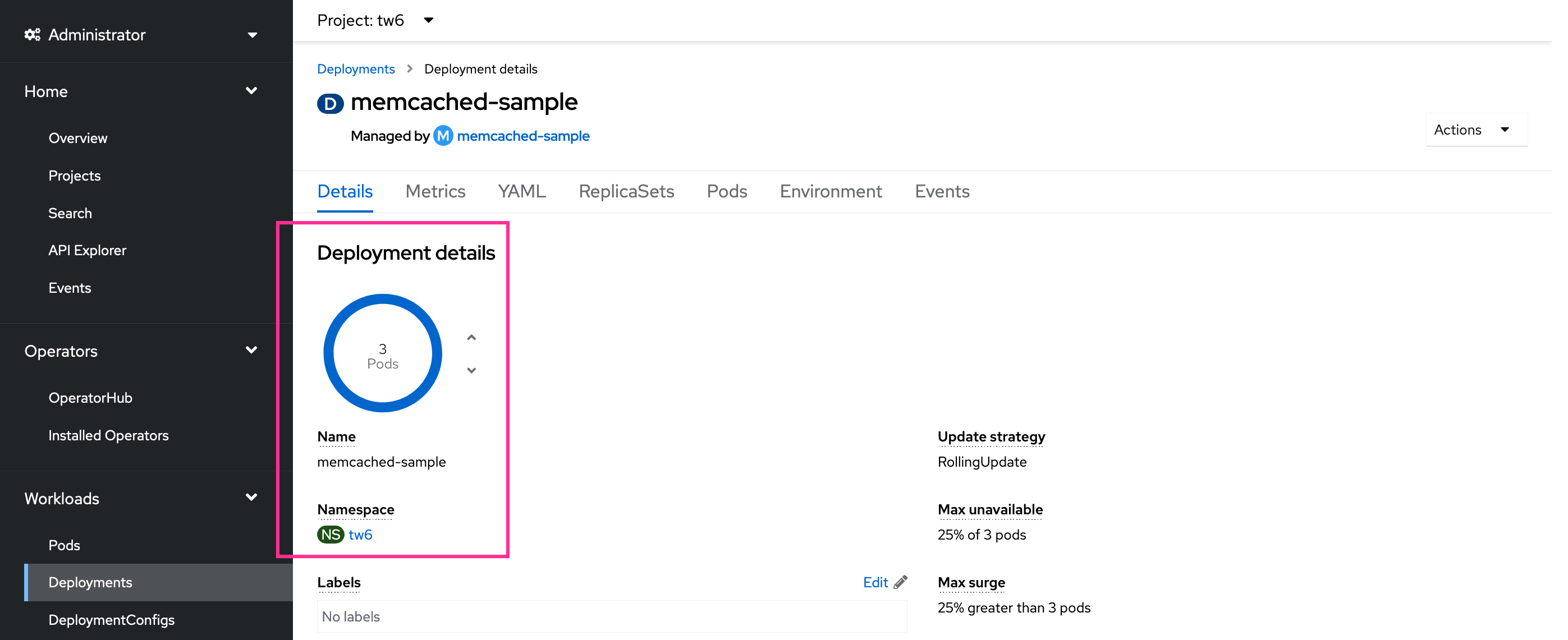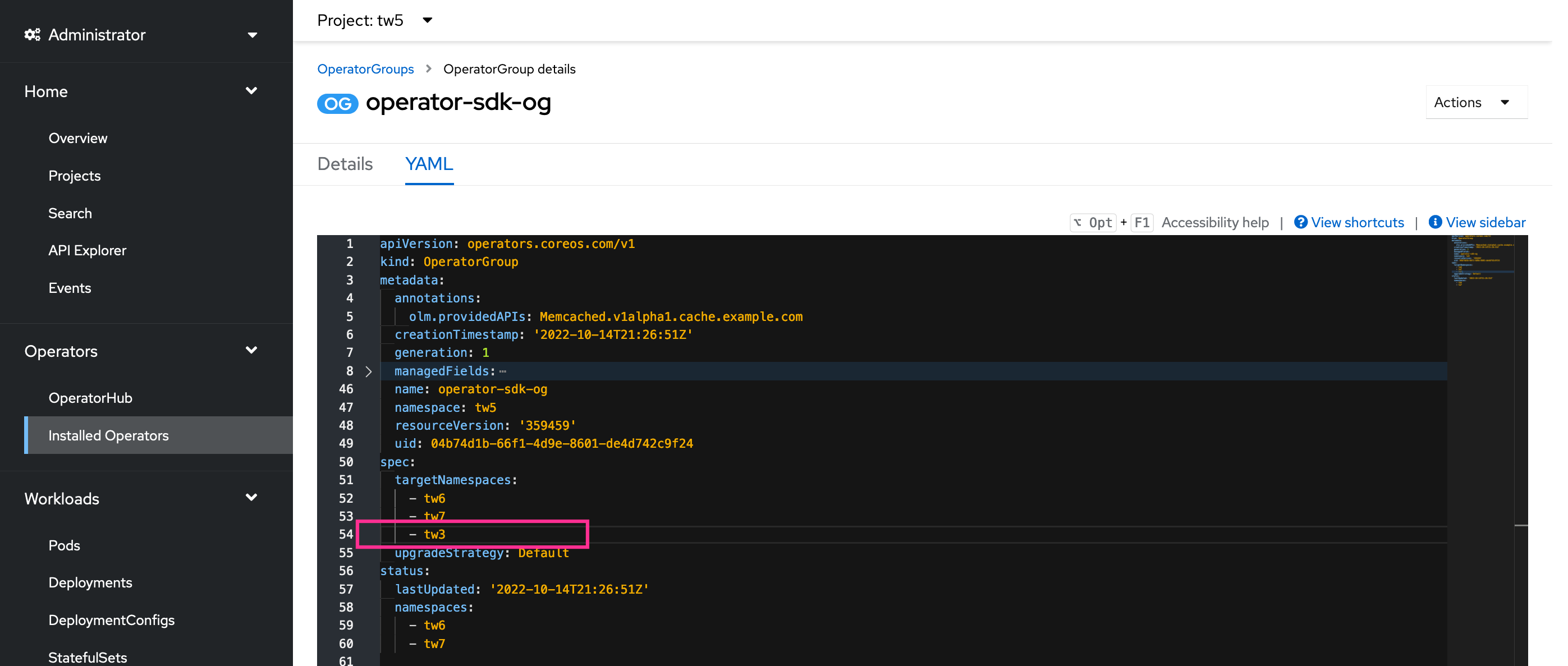go-tutorial-hack-multiNS
This is a simple Memcached Operator based on the SDK Go tutorial to show how an Operator dynamically watches namespaces in response to cluster admin's configuration with the help of the OLM.
Keep in mind that MultiNamespace installMode could easier lead to "OperatorGroups with intersecting provided APIs competing for the same resources in the set of intersecting namespaces" (see OperatorGroup Intersection), so it is less recommended if your Operators could be installed more than once on a cluster.
(If your Operator will only be installed once on a cluster, let's proceed with caution.)
I went ahead and installed it using the Operator SDK:
operator-sdk run bundle quay.io/tlwu2013/go-tutorial-hack-bundle:v0.0.1 -n tw5 --install-mode MultiNamespace=tw6,tw7
The above run bundle command basically is saying I want:
- to install Operator in namespace:
tw5 - the Operator be installed in
MultiNamespaceinstallMode, initially watching namespace:tw6,tw7 - this Operator allows me to later add an additional namespace:
tw3as one of thetargetNamespacesafter the installation
That way, tenants of namespace: tw3 can create Memcached custom object there (and know they are able to do so by the CSV).
Step 1. after the run bundle cmd, in the OCP console, you can see the Operator is installed in namespace tw5 and managing namespace tw6,tw7

Step 2. I created a Memcached custom object in namespace: tw6

Step 3. The Memcached deployment got 3 pods spun up correctly by the Operator in namespace: tw6

Step 4a. You can see the manager's WATCH_NAMESPACE env var is replaced by the CSV with its olm.targetNamespaces annotation

Step 5. add namespace: tw3 as an additional targetNamespace (This is when could easily cause intersecting/overlapping between the same provided APIs among OperatorGroups if your Operators are installed many times on cluster.)

Step 6. OLM would update CSV olm.targetNamespaces annotation accordingly and the changes would flow into the manager's WATCH_NAMESPACE env var for the additional namespaced cache.

Step 7. Created a Memcached custom object in namespace: tw3, and the Memcached deployment spun up 3 pods by the Operator correctly

